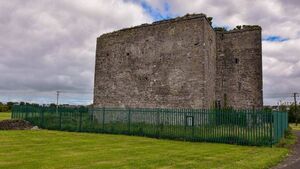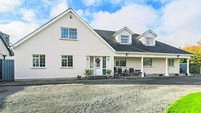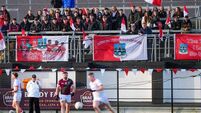The history behind Athy's name

It is probable that Woodstock Castle and St John’s priory represent the earliest buildings of what we now know as Athy
The name ‘Athy’ is commonly believed to have come to us as the anglicized form of the ancient Irish place name Ath Ae.
Patrick Woulfe, in his book writes that ‘at the time of the Norman invasion, surnames were still far from universal in England and many of the first settlers came to this country with only single names.
Some of these took surnames on Irish soil after the Norman fashion, from the places where they settled’.
So it was that one of the first families to settle in and around south Kildare took their surname from the ancient Irish placename “Ath Ae” which was anglicised as “Athy”.
The Athy family did not stay long in south Kildare. After a short stay, they moved to Galway where tradition relates that one of the Athy family erected the first stone house or castle in that area.
The Athy family was later to become one of the 14 ancient tribes of Galway.
There is no evidence of a fortress or settlement at Ath Ae in ancient times and so to Norman influence must be credited the first riverside settlement in the post-1169 period.
Under the Normans, most of the province of Leinster passed into the hands of Richard de Clare, Earl of Pembroke, better known as Strongbow.
Goddard Henry Orpen, in his pioneering work stated that the Barony of Rheban was probably granted by Strongbow to Robert de St. Michael.
This must have occurred prior to 1176, the year of Strongbow’s death. Land allocation was generally followed by the construction of military fortresses in localities selected for their strategic importance.
Such precautions were necessary against the dispossessed Irish who had been driven from the lands.
The river Barrow was traversed at both Ath Ae and Rheban by fords, the control of which were vital to the Normans in maintaining supremacy over the Irish in the area.
It is therefore reasonable to assume that Rheban Castle and Woodstock Castle or the earlier wooden structures which they might have replaced, were built soon after the arrival of the Normans.
Many previous writers on Athy have ascribed the building of Rheban Castle to Richard de St. Michael.
Richard was the son and heir of David de St. Michael and the grandson of the original grantee of the lands Robert de St. Michael.
We know that David de St. Michael granted the Church of Rheban to the Abbey of St. Mary’s in Dublin before the end of 1200, a grant which was subsequently confirmed by his son Richard in 1215.
It is highly probable that the church of Rheban came into existence after the erection of a Castle in the same locality, this being the usual sequence in a hostile country. Rheban Castle is therefore most likely of pre-1200 construction.
On the other hand Woodstock Castle is universally accepted to have been built by Richard de St Michael who succeeded to his father’s property and title sometime before the confirmation of the gift of the Church of Rheban in 1215.
There is no agreement amongst the many writers on Athy as to the year of the castle’s construction.
In the year 1190 is claimed, but not substantiated, as the year in which Woodstock Castle was built.
In it is written that Woodstock was built about the time of the foundation of St John’s Abbey by Richard de St Michael as an appendage to the Palatinate of Dunamase.
St John’s Abbey was founded by Richard during the reign of King John, who died in 1216.
All the evidence points to the erection of Woodstock Castle in 1215 or thereabouts, and as such, the castle and St John’s priory represent the earliest buildings of what we now know as Athy, with the castle as the probable first building.
The castle’s location, with the River Barrow to its rear and an extensive wood to the front, made the fortress almost impregnable and well sited to protect the ford over which it was to stand for many years.
The catholic invaders of a catholic people who spoke a different language from that of the natives, and whose customs and traditions were also different, as far as possible, made their settlements self-sufficient.
Religious settlements played an important part in Anglo Norman life as they had done in ancient Ireland.
One may assume that the desire to make the everyday lives of the early settlers at Woodstock as Anglo-Norman as possible prompted the Baron of Rheban, Richard de St Michael, to invite the Order of Crouched Friars or Friars of the Holy Cross to come to the area.
The Friars of the Holy Cross were so-called because of an embroidered cross worn on the habits of community members.
Their monastery was established under the invocation of St John and its domain consisted of an island in the river Barrow and the adjacent fields as far as the former Barrack yard in Barrack Street.
It included that part of the town now called St John’s and St John’s Lane.
For the first 40 years or so of its life, the settlement on the western bank of the ford of Ae consisted of Woodstock Castle, with the Monastery of St John’s in its shadow and the huts of the Anglo-Norman settlers who came in the wake of Strongbow’s army.






